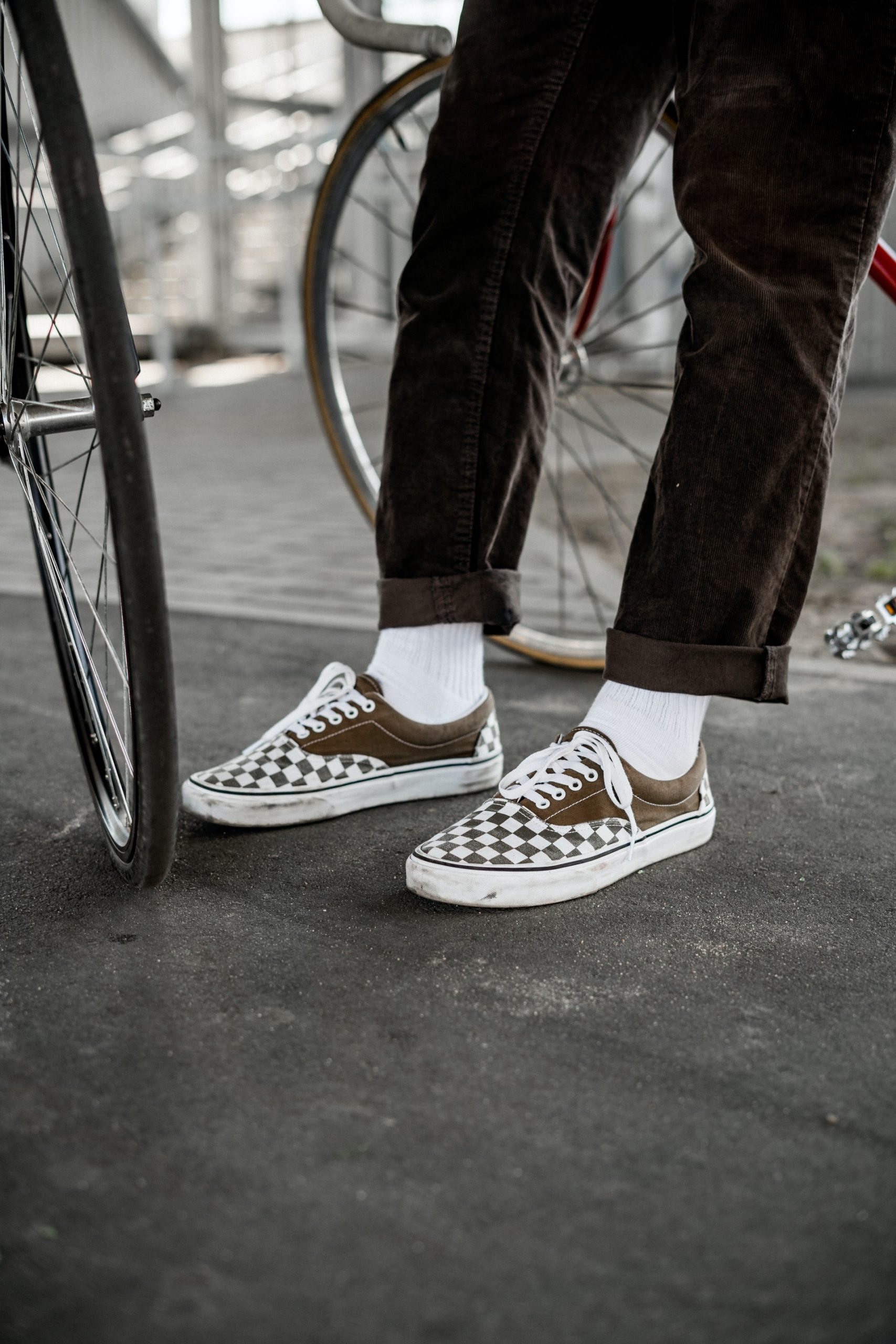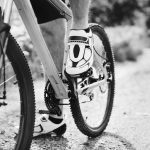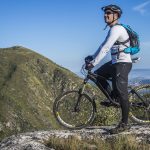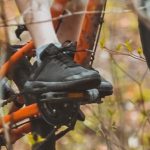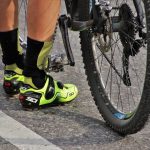Mountain bikers have a variety of shoe options, from technical clipless cycling shoes to casual skate-inspired kicks. One common question is whether Vans, the iconic skate shoes, can double as biking shoes. This essay explores the pros and cons of using Vans for mountain biking.
What Are Vans Shoes?
Vans are a classic style of casual shoe originally designed for skateboarding. The original Vans style features a low-top design with vulcanized rubber soles, canvas or suede uppers, and a slip-on construction with elastic side accents. The simple styling became popular with skaters, BMXers, and other action sports athletes.
Over the years, Vans expanded beyond the original slip-on to include lace-up shoes, boots, and sandals. They introduced technical features like cushioning and grip. However, the brand remains rooted in casual, comfortable shoes suitable for action sports. Many mountain bikers are drawn to Vans’ style and skate heritage.
Using Vans With Flat Pedals
The most common use of Vans for mountain biking involves pairing them with flat pedals. This pedal style has a wide, stable platform instead of clipless cleats. Flat pedals allow the shoe’s rubber soles to grip for control.
Most Vans models have enough sole rigidity to be used with flat pedals. The rubber soles provide solid traction on the pedal body, letting your feet stick well. Vulcanized rubber compounds have excellent grip. The soles resist peeling or separating from the flexible sidewalls.
Riders tackling tamer trails often find Vans have enough grip and support for efficient pedaling. Wearing your favorite comfortable skate shoes while riding can make the experience even more fun and casual. It captures the spirit of outdoor adventure.
Downsides of Vans for Biking
However, using traditional Vans for serious mountain biking does have some potential downsides compared to purpose-built cycling shoes:
First, most Vans lack the ultra-stiff soles of dedicated bike shoes. Very soft soles can cause foot fatigue and loss of power on long rides. More casual shoes don’t efficiently transfer energy to the pedals.
Next, Vans don’t have aggressive outsole lugs designed for ultimate pedal grip. The tread can get packed with mud more easily than lugs that shed debris better. This results in less positive foothold on flat pedals on messy trails.
Further, Vans uppers usually use canvas or thin suede that offers little protection or support. The shoes cannot handle repeated rock strikes or really rugged terrain. The flexible uppers also allow your feet to move a bit inside, reducing precision.
Potential Solutions for Using Vans
To mitigate some of these downsides, you can take certain steps when using Vans for mountain biking:
Upgrade the insoles with cushioned options or custom moldable support to limit foot fatigue. Look for soles designed for activities like skateboarding that require impact protection.
Use pedals with tall, aggressive pins or replace standard pins with longer grippier ones. This digs into the soles better for hold on the pedals as you apply force. Pedal your smoother trails until you wear in the shoes.
Consider adding rigid inserts or a footbed shank between the insole and outsole to increase stiffness. Just avoid anything so stiff that it makes the sole unflexible. You want some give but less flex.
Applying seam grip or shoe goo reinforces high-wear zones on the uppers. Looking for skate shoes with thicker, reinforced uppers also helps. You want materials that withstand trail abuse.
Adding security straps, lace locks, or elastic laces prevent feet shifting inside. Woven toe caps or bumpers on the uppers offer more protection too. Styling can be retained while boosting riding performance.
Benefits of Dedicated Bike Shoes
While measures make Vans work better, dedicated cycling shoes remain the best mountain bike footwear choice for serious riding situations. Key advantages include:
- Extremely stiff soles that prevent power loss and foot fatigue. Top cycling shoes use carbon fiber or reinforced nylon plates optimized for power transfer.
- Deep, aggressive lugs designed to bite into flat pedal surfaces without getting packed with debris. Shoe rubber compounds maximize pedal grip even in mud.
- Reinforced uppers with abrasion resistant fabrics and cushioned protection zones. The shoes hold your feet firmly yet comfortably.
- Designed-in features like lace locks, ankle protection, sealed off tongues, and customizable insoles for personalized fit and feel.
- Clipless lace-up models specifically mate cleats to pedals for the most power and foot security. Or shoes paired with combo pedals for versatility.
However, dedicated bike shoes do sacrifice some comfort and casual styling that Vans provide off the bike. Ultimately, many riders have both types of shoes for different riding scenarios.
Casual Kicks to Technical Performers
For many mountain bikers, Vans represent a gateway into the sport and a fun casual alternative to technical gear. Paired with proper pedals on smoother terrain, the skate shoes totally work well enough.
As riders progress and tackle more aggressive trails, dedicated cycling shoes unlock improved efficiency and control. But using Vans with some easy enhancements lets you retain skate style while boosting ride performance.
Whether sticking to casual kicks or upgrading to high-tech footwear, wearing properly fitting shoes matched to your pedals leads to the best possible mountain biking experience. Comfortable feet help you focus on skills and having maximum fun on the trails. So while Vans are good to get started, upgrading to mountain biking shoes are well worth it when you can.
